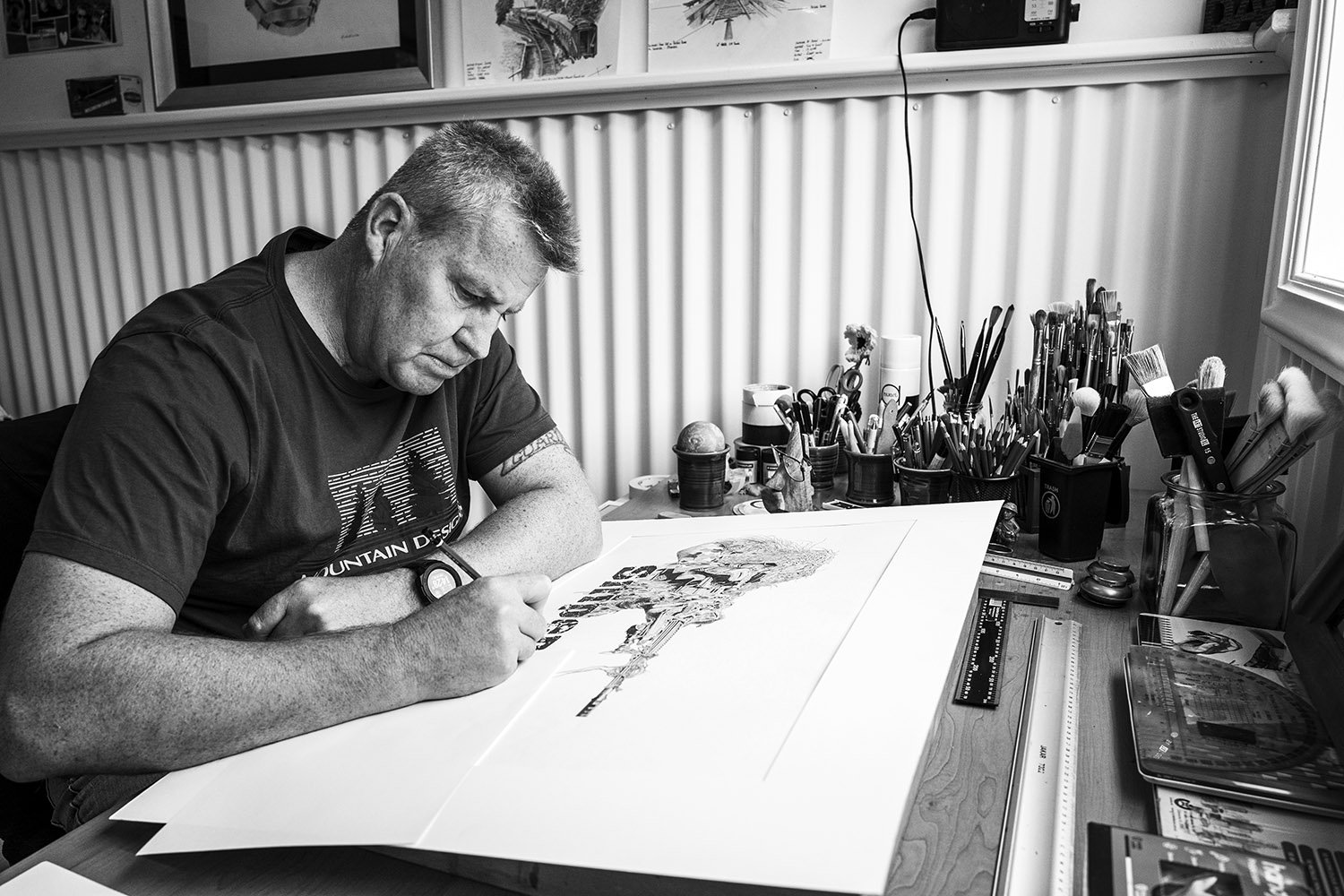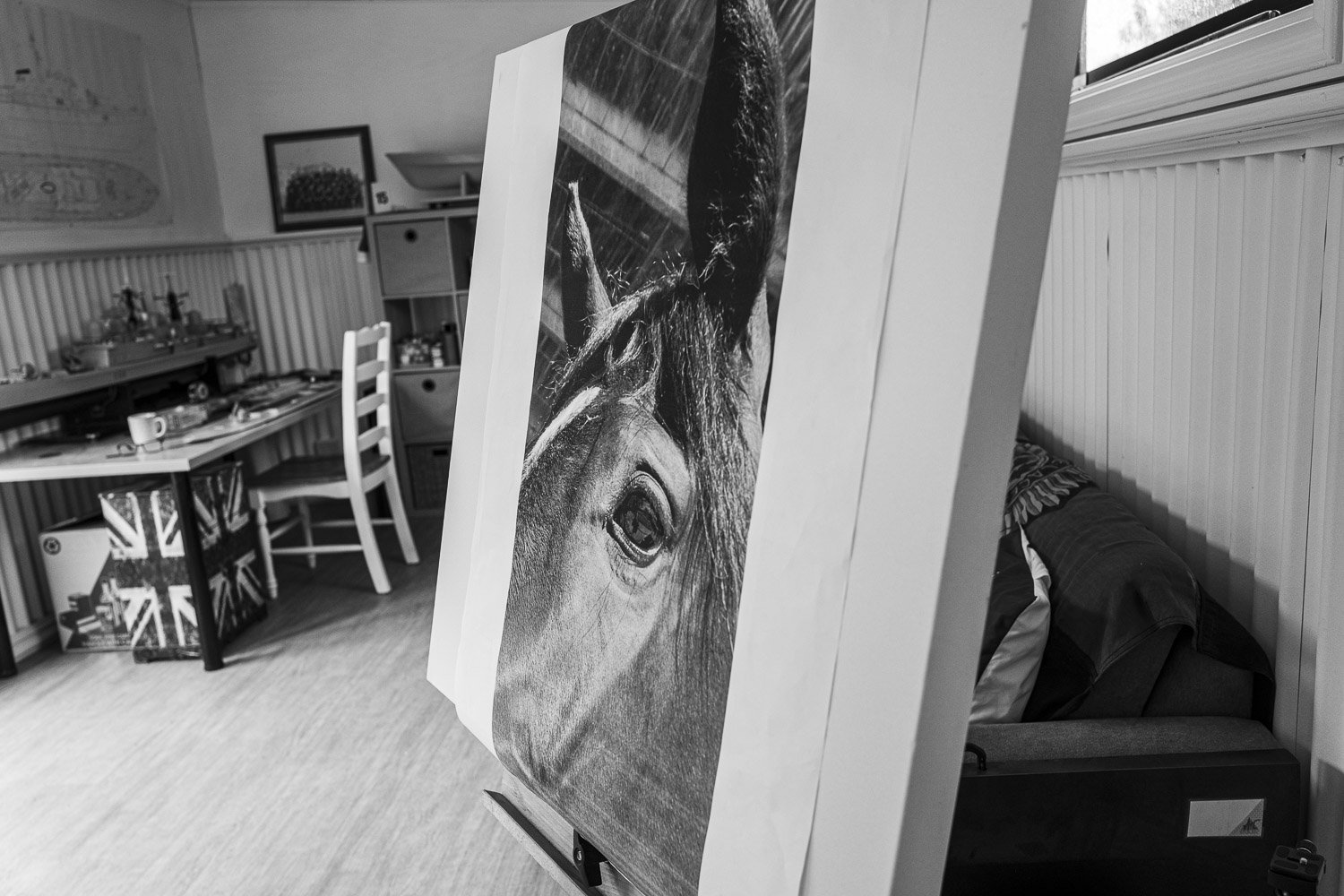Robert Milton
Army, Painter
Robert always wanted to become an artist. He found out early that he was ‘pretty good at it’ and was accepted into the School of Art in Glasgow, Scotland. Yet after only a year and a messy parental divorce, he knew that he needed to leave home and support himself. As a student, this wasn’t possible.
Passing the recruiting office one day, Robert decided to follow his father’s footsteps and apply to become a Royal Air Force (RAF) engineer. However, he failed the medical, and it was then that Robert discovered he was colour blind. Walking out dejected, he was quickly ushered into the army recruitment office where they were happy to enlist him as a Queen’s Guard.
“I had mixed feelings. I knew I had to get away. I was also really excited at what lay ahead.”
The strict regime of the Guards suited Robert’s strong sense of discipline. There, he discovered that he was also ‘pretty good’ at shooting and was enrolled into a sniper course. He went through the ranks of sniping and reconnaissance and then proceeded into Special Forces.
“I look on those days as a curse sometimes. As my dark period. I wish I was rubbish at shooting. I had no inclination for that sort of thing. But I know that, whatever I try, I have to master it - as quickly and as accurately as I possibly can.”
It was only when he was medically retired, many years later, that Robert began realising the toll those years had taken on him.
“When I was in Sandhurst, one of my snipers died in Afghanistan. I found it really hard to get over that. I know it sounds ridiculous, but I felt guilty that I couldn’t protect him, even though I wasn’t even in the same country. I couldn’t deal with the fact that he’d died,” Robert recalls.
Making sniping his own, Robert became an instructor and began harnessing his artistic talents.
“We had cameras, but the image wasn’t immediate. It was the days of spool film that had to be sent off to be developed. I started teaching snipers how to sketch the areas of reconnaissance. This worked out well - especially for briefing those higher up the chain.”
“Art was always part of my life in the army. I used to do murals or advertisements for boxing tournaments and so on. It was woven into my job. I taught Prince Harry how to sketch a bit, at Sandhurst.”
He remembers an incident, as a Queen’s Guard, with humour.
“I came around the back of the guard post at Buckingham Palace and one of my guardsmen was trying not to make any noise. But a dog had latched onto his leg. He was looking at me as if to say, ‘What can I do? It’s the Queen’s corgi!’ This little thing was quite vicious and really going for his leg. I kicked the dog, it went off yelping, and we both legged it back to the guardroom.”
His next move was to Australia, in a training role. Unfortunately, Robert’s back was seriously injured when he was travelling in an armoured vehicle that dropped three metres into a creek bed.
“That was the end of my army career, basically,” says Robert.
“It took me a long time after that to be tested for PTSD (Post-traumatic stress disorder). I always thought I was way stronger than that. I would counsel other people with the condition but I couldn’t believe that I had it. It was devastating and I was pretty embarrassed. I was the Master Sniper in my unit in Iraq. People came to me for help and advice. I’d done eleven Operational tours. But it all just caught up with me. You try to ‘get on with it’ but you pay for it later. I still struggle now and it’s my ongoing battle,” he says quietly.
“Then I knew what I had to do. I needed art to get me out of the hole I was in. It was something tangible I could hold onto. Art took me out of myself.”
Robert became a patient in a veterans’ hospital in Melbourne. He had previously worked with the Australian National Veterans Arts Museum (ANVAM) on the Invictus Games where his painting, True Resilience, was showcased. Joining in on their weekly art classes, Robert was able to master his feelings of guilt and shame.
From there, Robert has taken his art to a different level. He thoroughly enjoys teaching veterans and their spouses, knowing the relief it can be to those who suffer with the effects of PTSD, and those who care for them. Robert also finds value in producing art that fundraises for charities, especially relating to PTSD.
For his own creative development, Robert has successfully entered art competitions, where he is able to showcase his passion. One Archibald Prize entry was a self-portrait.
“The peripherals of the painting are a snapshot in a day of my life. It shows what I see and feel on a daily basis with no warning. I painted the outside in grey tones to reflect my visions and ‘daymares’. When they do come, they are not always in detail, which is frustrating as I work with detail.”
Robert shares his story verbally and artistically in his aim to raise awareness of mental health issues in veterans, both as an artist and a guest speaker. His words and images are not only powerful, but help his audience to better understand his journey and how art has helped him battle his demons.
robertmilton.com.au






